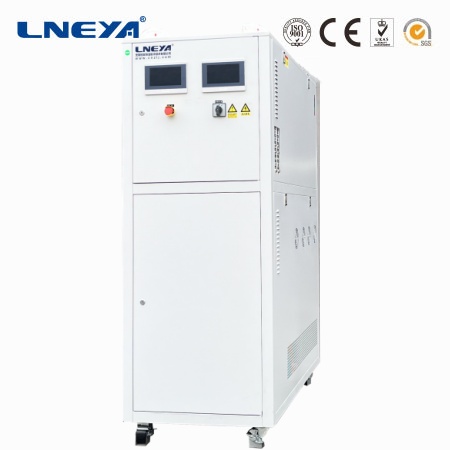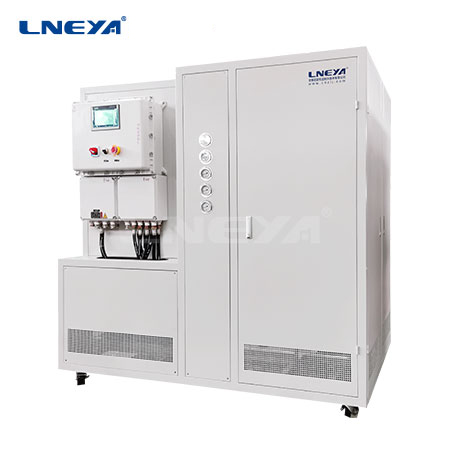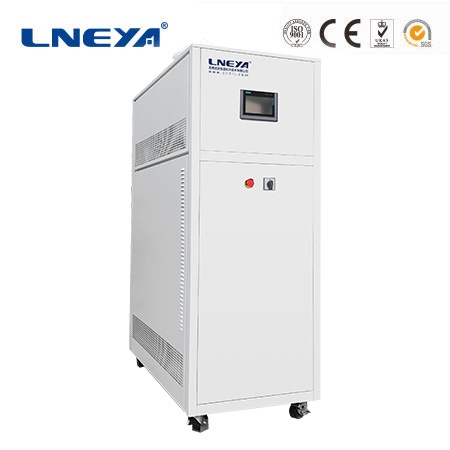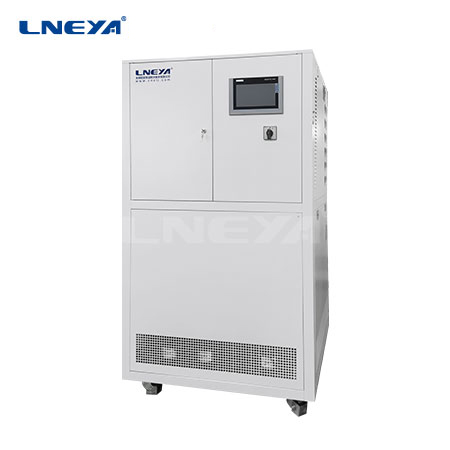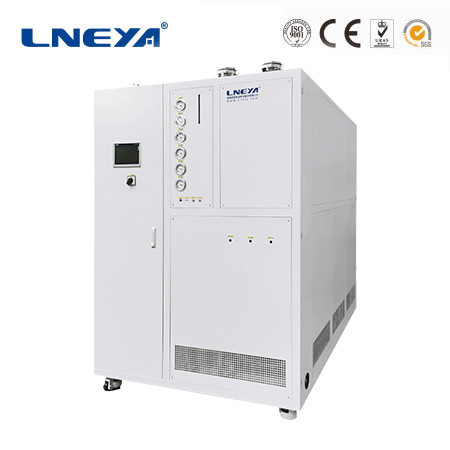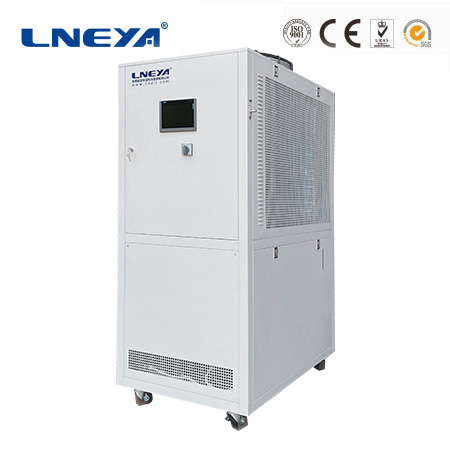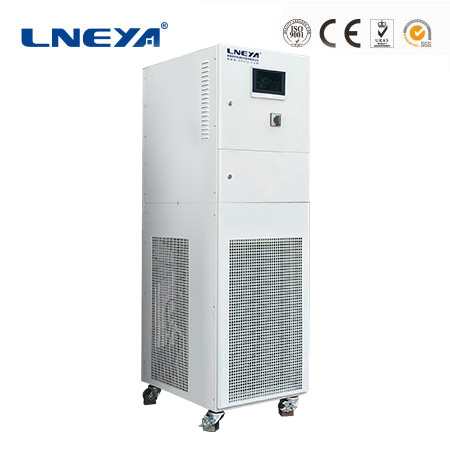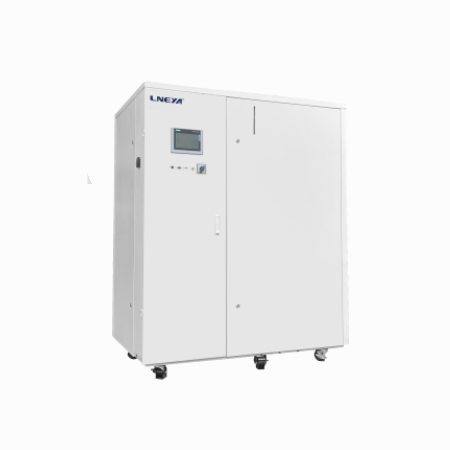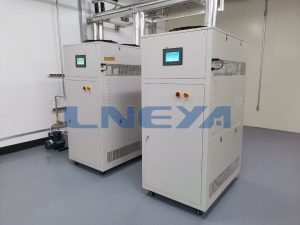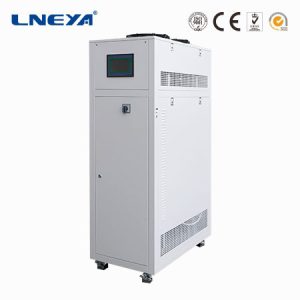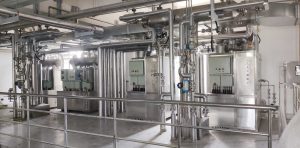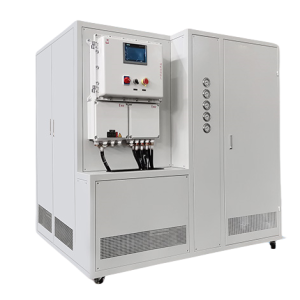Glass Reactor Heating and Cooling Circulator Temperature Control Unit
Glass reactors require heating and cooling circulators during experiments because accurate control of reaction temperature is essential to ensure the success of the reaction, the quality of the product, and the safety of the experiment during the chemical reaction.
The following are the main reasons why heating and cooling circulators are needed:
1.Accurate control of reaction temperature:
•Many chemical reactions are temperature sensitive and can only be performed within a specific temperature range. Temperature control accuracy is usually required to be within ±1°C or less. For some sensitive reactions, higher accuracy may be required, such as ±0.5°C or less.
•The heating and cooling circulator unit can accurately control the temperature in the reactor to ensure that the reaction is carried out at the optimal temperature.
2. Improve reaction efficiency:
•Temperature is an important factor affecting the rate of chemical reactions.
•The reaction temperature can be optimized by heating and cooling circulators to increase the reaction rate and yield.
3. Temperature control range:
Depending on the reaction, the temperature control range can range from low temperatures (such as -78°C) to high temperatures (such as 200°C or higher). Therefore, the temperature control system needs to be able to cover a wide temperature range.
4. Safety:
•Many chemical reactions may be dangerous when the temperature is too high or too low, such as explosion or violent exothermic reaction.
•The heating and cooling circulator can adjust the reaction temperature in time to ensure safety during the experiment.
5. Thermal stability:
•Some chemicals are unstable at a certain temperature and may decompose or deteriorate.
•The heating and cooling circulator can help maintain the thermal stability of the reaction system and avoid unnecessary side reactions.
6. Thermal cycle test:
•When conducting thermal cycle performance tests on materials, it is necessary to simulate cyclic changes under different temperature conditions.
•The heating and cooling circulator can achieve rapid temperature changes and simulate the performance of materials under different temperature conditions.
LNEYA heating and cooling circulators are usually equipped with an automated control system that can realize the programming, execution and monitoring of temperature programs to improve experimental efficiency and accuracy. The data recording function can automatically record temperature data during the experiment, which is convenient for subsequent data analysis and result evaluation. It can be integrated with a variety of experimental equipment and support a variety of experimental standards and protocols. When selecting a heating and cooling circulator, users need to consider factors such as the reactor capacity, the required temperature control range, and the heating and cooling rates to ensure that the device can meet the specific needs of the experiment.
COOLING HEATING CIRCULATOR
Heating Power
3kW~80kW
Cooling capacity
0.3kW~80kW
Power range
7.5kW~150kW
Cooling capacity
0.25kW~60kW
Heating Power
2.5kW~60kW
Power range
5kW~95kW
Cooling capacity
1kW~200kW
Heating Power
2.5kW~200kW
Power range
4kW~260kW
Heating Power
3kW~80kW
Cooling capacity
0.3kW~80kW
Power range
7.5kW~150kW
Cooling capacity
0.4kW~15kW
Heating Power
2.5kW~15kW
Power range
5.2kW~28kW
Heating Power
3.5kW~200kW
Cooling capacity
0.45kW~200kW
Power range
6.5kW~280kW
Cooling capacity
1.5kW~15kW
Heating Power
2.5kW~15kW
Power range
3.6kW~20kW
Heating Power
3.5kW~80kW
Cooling capacity
0.45kW~80kW
Power range
12kW~200kW
 Industrial Chiller Heater Equipment Supplier-LNEYA
Industrial Chiller Heater Equipment Supplier-LNEYA

